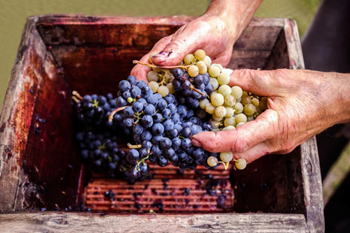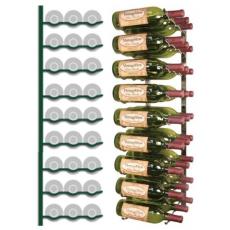How Will Climate Change Affect Wine Production?
Although wine production may not be your primary point of concern when it comes to climate change, vineyards across the globe have experienced disruption. Whether grapes are becoming overly ripe, or vines are being completely destroyed, climate change is creating inhospitable environments for wine production. As a result, wine producers are being forced to adapt their practices, and consumers are, too. Naturally, some areas are being more negatively affected than others; however, some of the most prominent wine regions across the globe are under fire. Climate change was recently brought to our attention via the 40°C heatwaves in the UK. Considering the average UK temperature in July sits at around 17°C, temperatures of this extreme are unheard of in Britain. Following these heatwaves, floods in Pakistan were deemed an emergency on 25 August 2022. These floods are a result of monsoon rains that have been exacerbated by climate change. Currently, a third of Pakistan is underwater, an area equivalent to the size of the UK. These recent happenings have made us aware that climate change is no joke, and it plays a role in almost every aspect of our lives. This is inclusive of wine production, and here’s how: The Connection Between Wine and Weather Climate and viticulture go hand in hand (viticulture being the cultivation of grapevines), as changes in temperature directly affect grape ripeness. The ripeness of a grape determines whether it will produce an acidic or sweet flavour. For instance, Australia, California, and Southern France produce some of the sweetest and fruitiest wines, as the warm temperatures allow the wine to ripen fully and lose natural acidity. In contrast, the UK, South Africa, and Northern France are spaces of cooler temperatures, leading to the production of acidic or tart wines. Ultimately, the sphere of wine production relies on specific temperatures to produce characteristic flavour profiles. Consequently, it can’t be denied that changes in rainfall and temperature have a detrimental effect on global wine production. How Climate Change is Impacting Vineyards Grapes are extremely sensitive crops and can be affected by the most minor changes in moisture and temperature. During growth season, the ideal temperature will sit between 12 and 22°C, and a healthy amount of rainfall is needed. Essentially, the growing conditions must be very balanced, and extreme frost or heat will stunt the grapes’ growth. Apparently, global warming didn’t get the memo, as climate change is set to bring sudden frosts, erratic rainfall patterns, warmer winters, and intense summers. Unfortunately, each of these unpredictable conditions isn’t suited to the required predictable environment of wine production. The effects of climate change are likely to: • Destroy vines as a result of colder temperatures • Stunt growth due to dryer conditions • Overly ripen grapes because of warming climates In the short term, some regions could reap the benefits of this changing climate; for instance, the UK wine production scene may thrive in these warmer temperatures. Despite this, some of the primary wine-producing regions in the world, such as France, are being hit hard. Already, some French vineyards have lost half of their production to frost and wildfires, and the country’s total output is likely to fall by as much as 29%. It’s for this reason that all global wine-producing regions are being forced to adapt their practices accordingly. These changes come in the form of migrating to new regions, harvesting at different times of the year, and growing new types of grapes. Without such adjustments, the wine production industry won’t survive the effects of climate change. How the Globe’s Wine Map is Set to Change There is one saving grace: the world’s wine map is set to expand over the years rather than contract. Despite this, countries deemed the birthplaces of wine will be forced to shift to new grape varieties, while new countries will emerge into the fine wine scene. Consequently, the dichotomy between Old World Wine and New World Wine may become a thing of the past. Regions in the Northern Hemisphere, such as North Germany, the UK, and Finland, always had colder climates; however, global warming has placed them as new contenders in the fine wine industry. Meanwhile, Southern European countries, such as Portugal, Italy, and Spain, will struggle with overheating and water deficits, meaning different grape varieties will need to be adopted. Similarly, vineyards in US states in the north-western region towards Canada will also have to change up their varieties, opting for grapes that thrive in raised temperatures. Finally, as climate change continues, New Zealand, Australia, and South Africa will have no choice but to adapt to droughts and warmer seasons alike. Adapting to a New Age of Wine Production with Cranville Wine Racks Thanks to climate change, there’s no escaping the fact that the wine industry will inevitably change. In the coming years, you’ll likely see new wines crop up that you’ve never seen before, and you may even see some of your favourites fade away. Regardless of how climate change takes effect, you can adapt to the new age of wine production with Cranville Wine Racks. Contact us about our storage solutions here.Visit the Cranville Wine Racks website for more information on How Will Climate Change Affect Wine Production?






